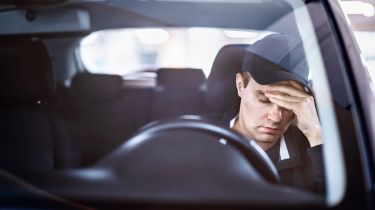'It's OK to drive high', young drivers express relaxed view on drug driving
22 per cent of young drivers think it's ok to drive high, while almost one-third of motorists believe that driving after taking prescription drugs poses no risk

Alarming new research suggests that young people are increasingly casual about drug use while driving, with more than a fifth of 17-34-year olds believing it’s fine to drive after taking Class A drugs.
The figure comes from research published by road safety charity IAM RoadSmart, and illustrates the existence of a wide generation gap. Fewer than five per cent of drivers aged 50-70 regard the practice of driving while using the most rigorously controlled category of recreational drugs as acceptable. But many will be shocked to hear that even a small cohort of older drivers are apparently prepared to risk the consequences of driving while impaired.
Class A drugs are considered by the government and police to be the most dangerous of the recreational drugs in circulation, and therefore face the stiffest controls. The list includes heroin, LSD and methamphetamine, but also more widely used substances such as cocaine and ecstasy. Cocaine causes the brain to release dopamine, which leads to overconfidence and impulsiveness, loss of concentration and delayed reaction times. Driving after taking ecstasy, especially when combined with other drugs, also results in significantly increased danger for road users, scientific research suggests.
IAM Roadsmart polled 2,013 drivers to generate its data, asking “How acceptable do you personally feel it is to drive after using Class A drugs such as cocaine and ecstasy?”. Overall, it says a “concerning minority” of 13 per cent declared the practice acceptable, with a clear majority of 87 per cent stating it was unacceptable.
The charity also polled drivers on their views on prescription drugs, and says it’s “just as worrying” that 30 per cent believe that driving on these poses only a minor threat to safety on the road. According to IAM, the figure “highlights a misconception that some prescription drugs have no adverse effects on the ability to drive”.
Also revealed was the finding that almost a third of motorists (30 per cent) believe that people driving after using prescription drugs were only a minor threat or no threat to their personal safety on the roads, compared with 14 per cent for those driving after taking illegal drugs. This highlights a misconception that some prescription drugs have no adverse effects on the ability to drive.
Recent Department for Transport data shows a huge 60-per cent increase in records of drivers with drugs in their system killed on the roads between 2014 and 2021, but this figure coincides with the roll-out of drug-testing technology by UK police forces.
“Whatever the cost of enforcement, the increasing prevalence and perceived acceptability among certain groups should encourage police forces to beef up resources to stamp it out and deter would-be drug-drivers,” says IAM Roadsmart spokesman William Porter. “We call on the Government to also do their part to ensure resources are deployed to prevent re-offending with the introduction of drug-driving rehabilitation courses, as currently mandated with drink-driving.”
The charity is also highlighting a range of other potential consequences for drivers choosing to drive while impaired by illegal or prescription drugs. These can include a minimum one-year disqualification from driving, an unlimited fine and up to six months in prison. Convictions can also result in greatly increased insurance premiums, and even potential problems entering countries such as the USA, it warns.
How do you think the police could make the roads safer from people driving under the influence of drugs? Let us know in the comments...
Find a car with the experts




